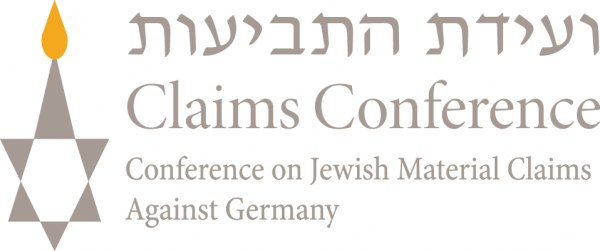Swiss Banks Settlement

Please note: this program is closed.
In late 1996 and early 1997, a series of class action lawsuits were filed in United States District Court against three Swiss banks. The suits alleged that the Swiss banks knowingly retained and concealed assets of Holocaust victims, and collaborated with and aided the Third Reich by accepting and laundering illegally obtained Nazi assets and profits of slave labor.
A class action lawsuit is a lawsuit in which one or several individuals seek to represent a much larger group of individuals who are alleged to have suffered the same harm as the “named plaintiffs,” the person(s) bringing the lawsuit.
The banks sued, or “defendant banks,” were two of Switzerland’s largest, Credit Suisse and United Bank of Switzerland (“UBS”), as well as another major Swiss institution, Swiss Bank Corporation, which has since merged with UBS. The lawsuit was brought before, and continues to be supervised by, Chief Judge Edward R. Korman of the Eastern District of New York.
In August 1998, the parties reached a settlement with a present value of $1.25 billion. The parties then spent several months negotiating a “Settlement Agreement,” which was signed on January 26, 1999. It became final on March 30, 1999, after 17 major worldwide Jewish organizations signed formal endorsements of the Settlement Agreement.
In exchange for the $1.25 billion payment, the plaintiffs and class members agreed to “release,” or forgo all future Holocaust-related claims against the defendant Swiss banks, as well as virtually all Swiss business and governmental entities. It was agreed that the $1.25 billion settlement would be distributed among five categories, or classes, of individuals.
The definitions of the five classes below do not exactly duplicate the definitions that are provided in the court’s Settlement Agreement. Instead, the definitions below track the language that was used in the different claims processes for each of the five classes.
- Deposited Assets (“Dormant Assets”/”Bank Deposits”): Those who had deposited money or other valuables in Swiss banks before or during the Holocaust, and who have never been repaid their deposits, or the heirs of such depositors. Claims were handled by the Claims Resolution Tribunal: www.crt-ii.org.
- Slave Labor Class I: Those who during the Holocaust era involuntarily performed work, for little or no payment, for entities under the auspices of the Nazi regime. Claims for Jewish victims of Nazi persecution were processed through the Claims Conference Program for Former Slave and Forced Laborers.
- Slave Labor Class II: Those who during the Holocaust era involuntarily performed work, for little or no payment, for Swiss-owned or controlled companies, wherever located, which had identified themselves to the Court. Claims were processed by the International Organization for Migration: www.iom.int.
- Refugees: Those who during the period 1933 through May 9, 1945 (V-E Day) attempted to flee Nazi persecution by escaping to Switzerland, and who either were turned away from the Swiss border or expelled from Switzerland, or were admitted into Switzerland but abused or mistreated there. Claims for Jewish applicants were processed by the Claims Conference.
- Looted Assets: Those who had assets of any kind which were stolen by the Nazis or their accomplices, and which assets were then transacted through Switzerland.
For all classes except for “Slave Labor Class II,” the parties agreed in the Settlement Agreement that claimants had to have been persecuted, or targeted for persecution, because they were or were believed to be Jewish, Romani (Gypsy), Jehovah’s Witness, homosexual, or mentally or physically disabled or handicapped. The Settlement Agreement referred to these individuals as “Victims or Targets of Nazi Persecution.” Slave Labor Class II was not limited to “Victims or Targets of Nazi Persecution” but was instead open to anyone who fell within the class definition.
The Settlement Agreement approved by the Court did not provide specifically for division of the money among the various classes and claimants. Instead, the parties who negotiated the settlement decided that a neutral third party was needed to assess the various options for allocating and distributing the settlement fund.
On March 31, 1999, Judge Korman, in accordance with the terms of the Settlement Agreement, appointed a Special Master “to develop a proposed plan of allocation and distribution of the Settlement Fund, employing open and equitable procedures to ensure fair consideration of all proposals for allocation and distribution.” The Court noted that the parties had determined that a Special Master would help reduce conflict among different classes and class members. The Special Master could conduct an independent inquiry into the facts and law, and propose a fair plan based upon that inquiry. The parties unanimously endorsed Judge Korman’s appointed Special Master, Judah Gribetz.
After his appointment as Special Master, Mr. Gribetz met with dozens of individuals and reviewed hundreds of written proposals submitted by interested persons representing each of the five classes. He also conducted extensive research and prepared a written report, which he filed with the Court on Sept. 11, 2000. The report is known as the “Special Master’s Proposed Plan of Allocation and Distribution of Settlement Proceeds.” The entire 900-page plan, as well as summaries of the plan and various exhibits attached to the plan, is available on the Internet at www.swissbankclaims.com.
Judge Korman approved the plan of allocation and distribution on November 22, 2000.
The information presented herein is intended for information purposes only and solely as a general guide. The information is not intended as legal advice. It is a summary of specific issues and does not represent a definitive or complete statement of the programs and policies of the agencies or governments mentioned. The information may not address the special needs, interests and circumstances of individual recipients. Individual situations differ and recipients are urged to seek individual advice. Individuals seeking specific information on a program are urged to contact the relevant program or to consult their social service agency or help center representative. To the best of our knowledge the information is correct as of the date of this document and this information may change subsequent to the said date.
Updated January 2005

